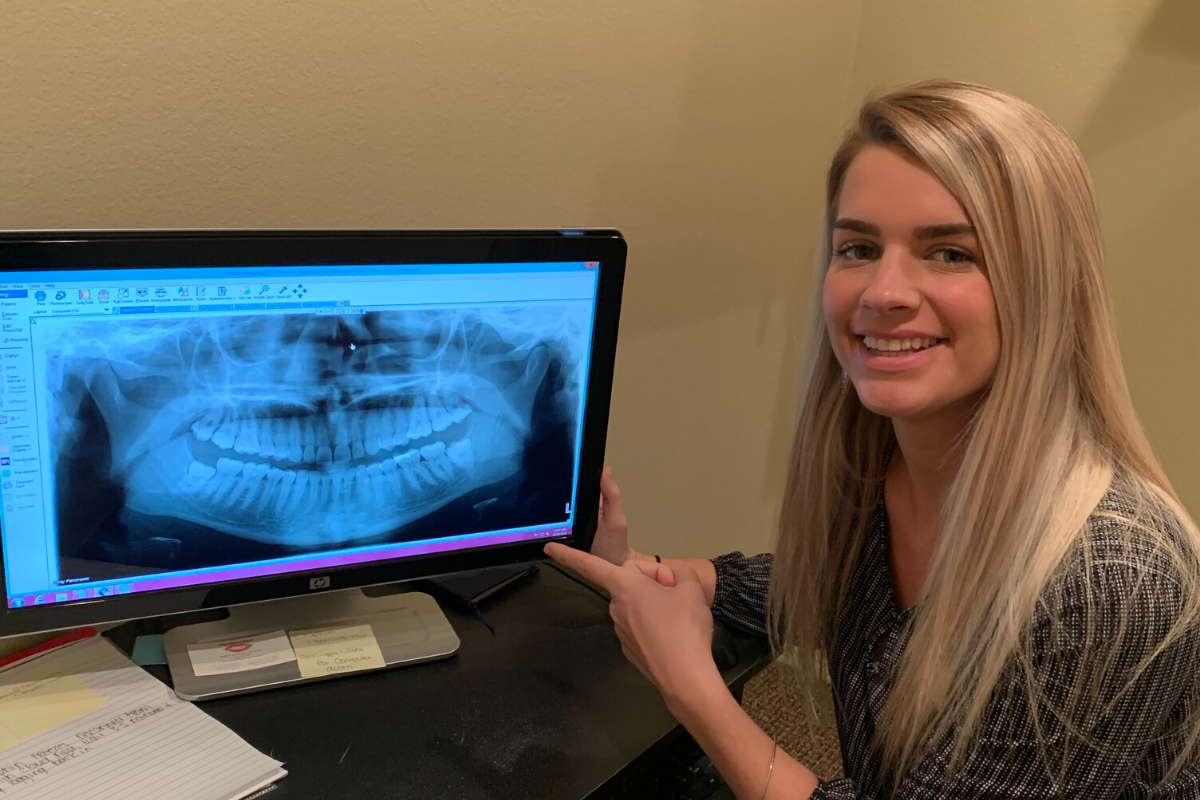
Every orthodontist’s goal is to provide the highest level of care to his or her patients, from routine check-ups to diagnosing issues to providing education for lifelong oral health. A critical part of any orthodontic program is the use of dental x-rays, which allows dentists to diagnose, prevent and treat oral health concerns. But even though x-rays have been used in dentistry and medicine for over 150 years, many people still worry about the long-term effects x-rays can have on our overall health.
One of the biggest concerns our Tulsa and Claremore orthodontic patients have is that the risk of radiation from x-rays outweighs the benefits. While dental x-rays do give off minor amounts of radiation, the long-term impact is minimal. In fact, dental x-rays give off so little radiation that they’re considered safe for children and adults.
At The Brace Place, we always have our patients’ best interests at heart. We would never put you through anything that would cause you undue harm. X-rays are an important part of our Claremore and Tulsa orthodontic practice because they give us a total picture of your oral health, which in turn gives us the information we need to treat you as best we can. Still not sure whether dental x-rays are safe for you and your family? Here’s everything you need to know so you can feel comfortable making decisions for your dental health.
What are X-Rays Anyway?
An x-ray (or radiograph) is an imaging tool that gives medical and dental professionals an inside look at what’s happening inside your body. During the x-ray process, electromagnetic radiation passes through you and creates an image of your bones and other structures. These images are what are commonly known as “x-rays,” but the term actually refers to the type of radiation used to create them.
In dentistry, x-rays show a high level of detail of your teeth, bone and supporting structures of your mouth. They can help orthodontists and dentists find cavities, diagnose bite issues or periodontal disease, and so much more. While we can see many things through a visual dental examination, certain issues simply aren’t visible to the naked eye. X-rays give us a deeper, more accurate look at what’s going on in your mouth, helping us create a better informed treatment plan.
Why We Use X-Rays in Orthodontics
As we’ve mentioned, the benefits of dental x-rays are vast. Not only do they give dentists and orthodontists the information they need to accurately diagnose and treat dental problems — x-rays are a tool to help prevent problems from starting in the first place. X-rays can be used during routine orthodontic visits to check for cavities, rule out disease and ensure proper tooth development, or as part of a holistic treatment plan to diagnose and treat specific orthodontic issues.
At The Brace Place, we believe that x-rays are a necessary step in the journey to your perfect smile. We also believe in making sure that your orthodontic treatment is as safe as possible. That’s why Dr. Patel uses modern, low-dose, digital x-rays that follow the ALARA principle. Coined by the International Commission on Radiologic Protection, the ALARA principle stands for “As Low as Reasonably Achievable” and ensures that:
- all x-ray exposures are justified in relation to their health benefits
- all x-ray exposures are kept as low as possible
- total x-ray doses received by a patient or personnel stay below the allowable limit
The ALARA principle also reduces the time of exposure, increases the distance between your body and the radiation source, and guarantees the use of shielding, such as leaded aprons. By following these standards, we are able to provide safe, effective and reliable dental x-rays to our patients.
What are the Risks of Dental X-Rays?
At The Brace Place, our patients are our number one priority. We want you to feel comfortable, safe and informed about your dental treatment. Before undergoing any sort of test, it’s important to understand both the risks and rewards. Fortunately, the benefits of dental x-rays are far greater than any downside.
When it comes to the risks of x-rays, radiation and its effects are the most common concerns. But the public perception of radiation from dental x-rays is inaccurate. In a single day, we’re exposed to more natural radiation than during a dental x-ray. In fact, dental x-rays have one of the lowest doses of radiation out there, equivalent to about an hour-long airplane flight. For comparison, a CT scan can expose you to almost double the radiation you’d encounter in a full year from natural sources.
While certain x-rays can pose serious health risks, dental and orthodontic x-rays are a safe and necessary tool for overall health. We only use digital x-rays, which have even lower radiation levels than traditional film x-rays, and we always cover you with leaded aprons to reduce your exposure as much as possible. If you still have concerns about the safety of dental x-rays, give The Brace Place a call to talk with an expert. We’re always here to help.


























